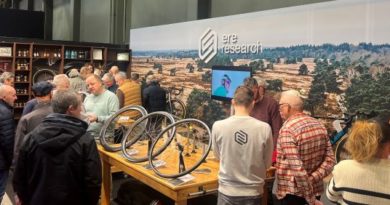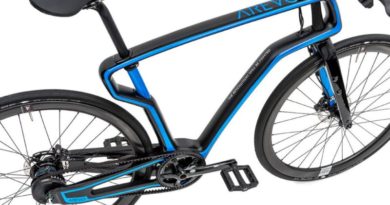Dr Rachel Aldred: To normalise cycling the bike business must change the record
What has the cycle trade really got to do to grow the pie? Portraying cycling as an accessible activity for all could be an important start, writes transport researcher Dr Rachel Aldred, who is keen to see more from the cycling industry aimed at under-served demographics…
In the UK we don’t cycle much by European standards – around 1-2% of all trips, and around 3% of commutes. The market’s much smaller than it could be.
It’s also demographically skewed. Looking at people doing any cycling in a month (via the English Active People Survey) women are half as likely to cycle as men, adults aged 60+ are half as likely to cycle as younger people, non-white people are half as likely to cycle as white people, and disabled people are half as likely to cycle as non-disabled people.
These inequalities are often taken for granted by planners. The ‘cyclist’ in consultation and promotional documents is rarely an older woman riding with her grandkids, rarely a disabled person using a handcycle. Research I’ve carried out with charity Wheels for Wellbeing found most London borough transport and cycling strategies paid little attention to the needs of disabled cyclists, and did not represent disabled cyclists in imagery.
This matters. The grandmother, the disabled person, will see those representations of cycling as excluding someone like them. They may even look at the picture of the ‘cyclist’ and see him (it’s usually him) as a threat, imagining him bearing down on them at 25mph. Similarly the planners themselves assume they’re planning for low numbers, and for the fit and the fearless. We’ll never get to cycling normality (10%, 15%, 20% of trips) while most people see cycling as a sport for a subset of strangely dressed men, rather than how people like them, their mum and their grandma, go shopping.
Transport authorities have started using images to better represent the diversity of cyclists we’d like to have. But how do we get that diversity – on the streets, not just on the posters?
First we need to recognise diversity is possible. Normal mass participation cycling is inclusive, even in the UK. Cambridge – our highest-cycling city – has equal proportions of women and men cycling, and around one in four disabled commuters there ride to work. In the Netherlands, cycling mode share increases at older ages, with older Dutch women making a quarter of their trips by bike. And although cycling rates are somewhat lower among Dutch ethnic minority people, their cycling mode share is still nearly 20%.
Research suggests groups under-represented in cycling are particularly sensitive to motor traffic risk. A review I led looking at age and gender found women, and probably also older people, have stronger preferences than men and younger people for protected infrastructure, like that in the Netherlands. Almost everyone wants cycle tracks, but it’s especially important for under-represented groups.
This isn’t the only important factor (crime is another factor that may particularly concern under-represented groups). But if we want to get the whole country on their bikes, not just young, sporty men, we’ve got to ensure everyone has access to high quality bike paths. I’d like to see the cycling industry do more to support this vision – which will help open up the joys of cycling to everyone, of all ages and abilities.
To follow Rachel’s work, catch her on Twitter here.



